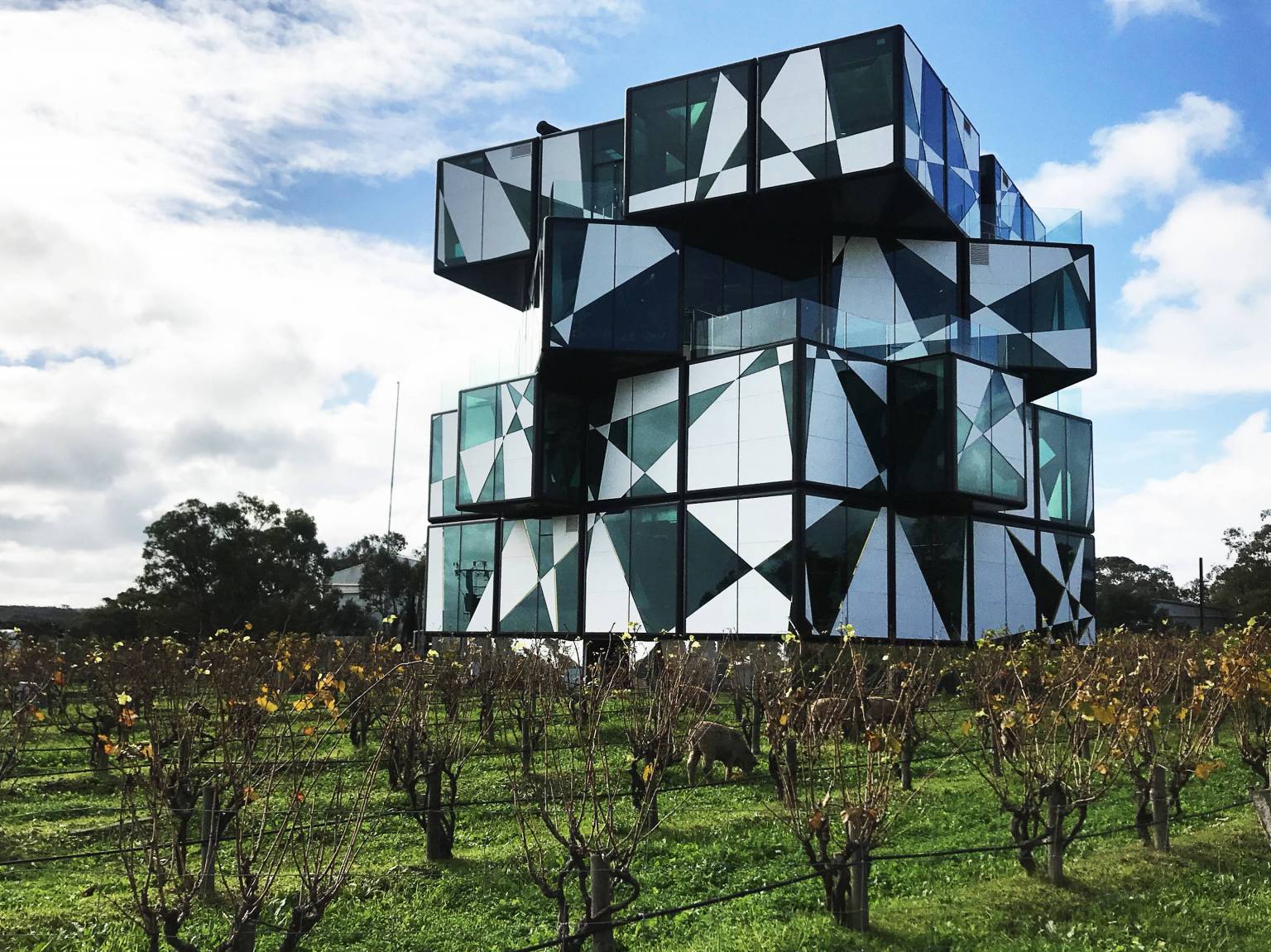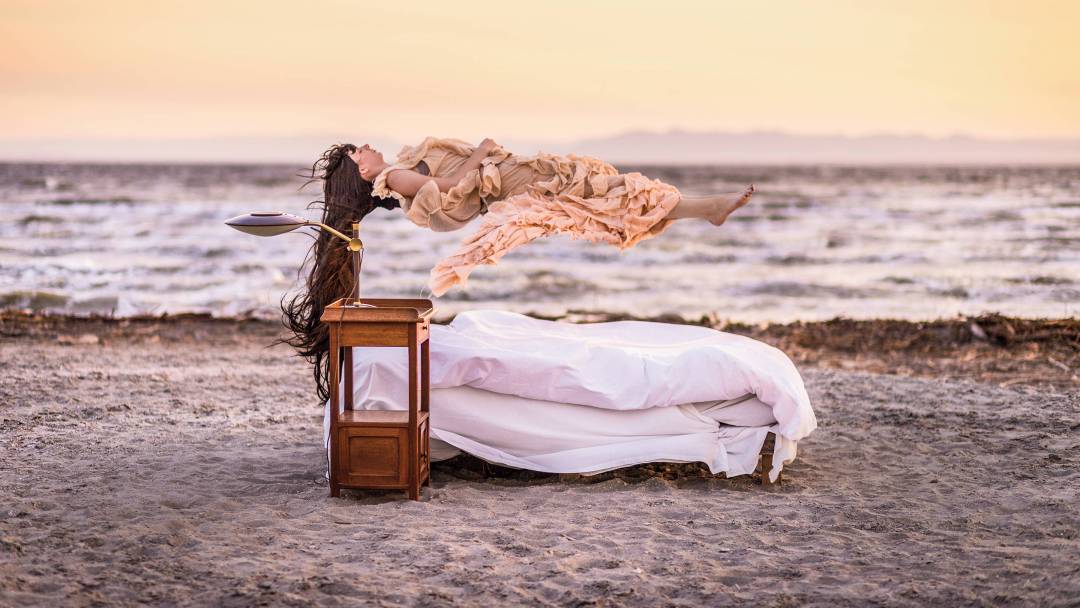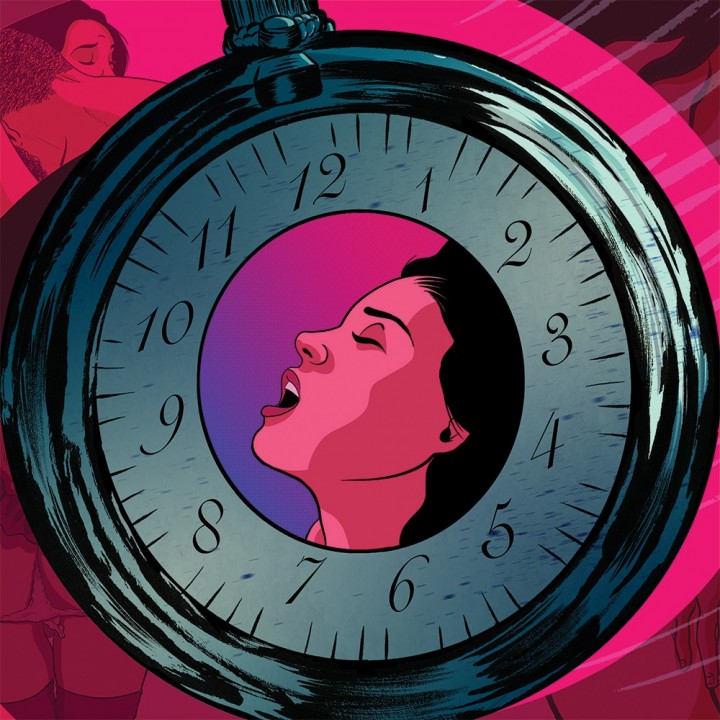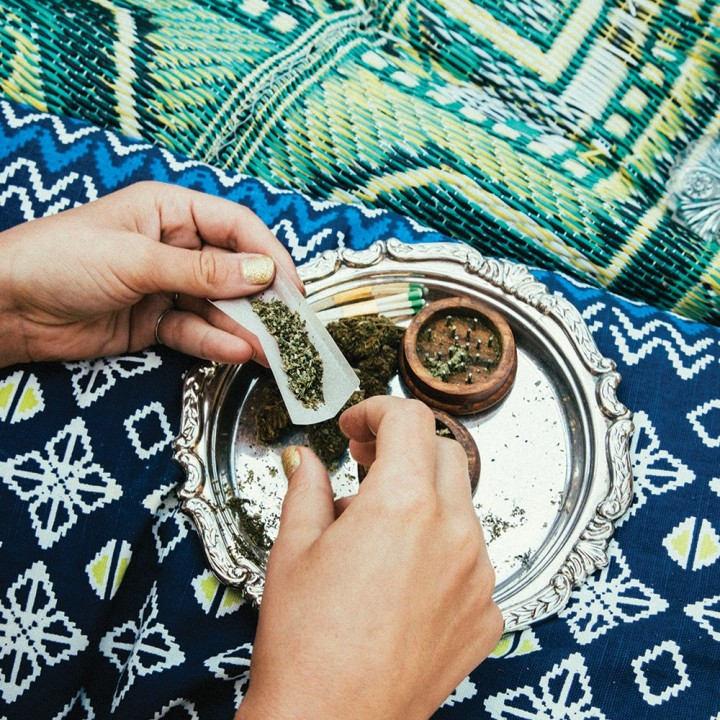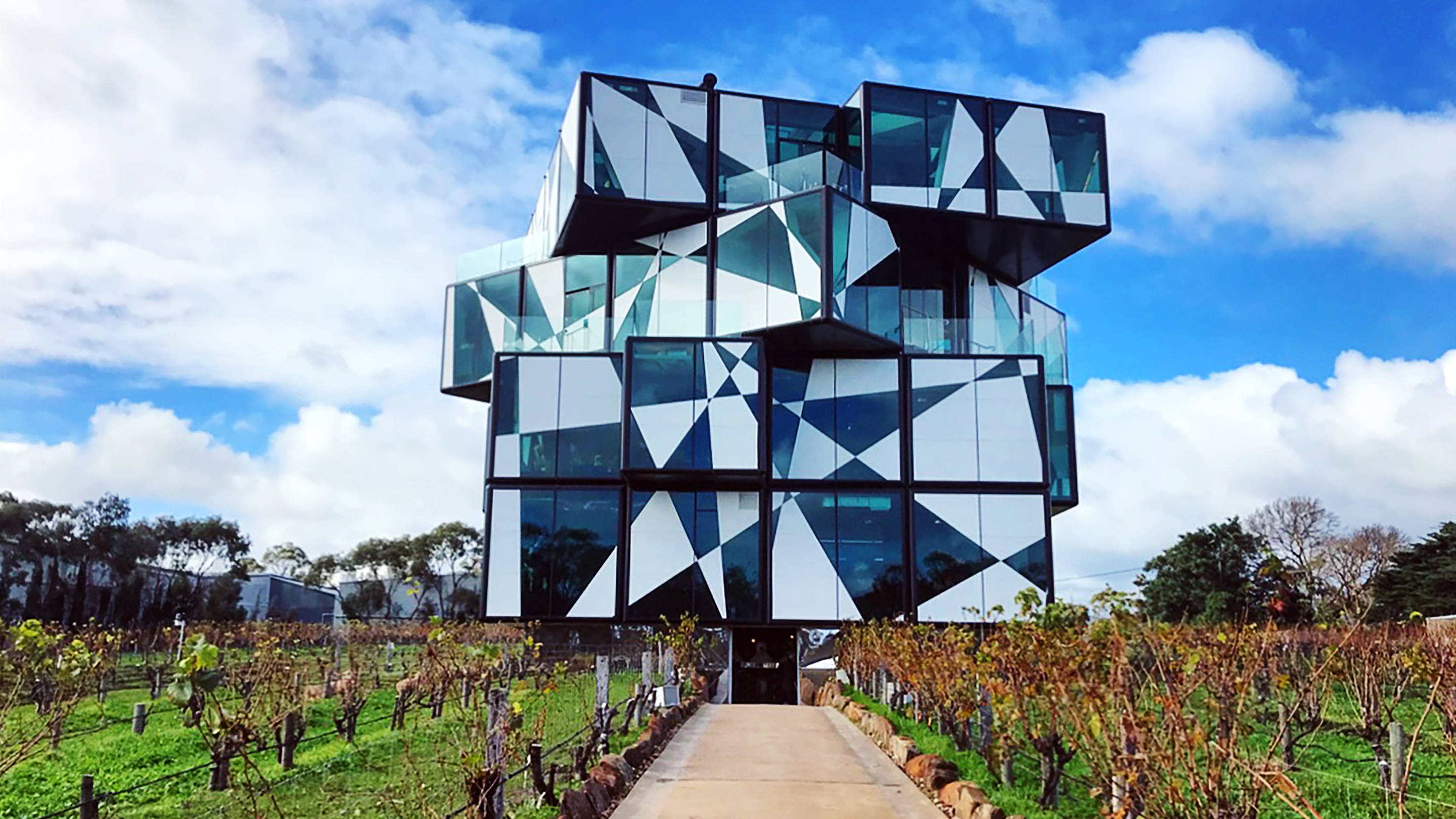
The d’Arenberg Cube Awakens All the Senses
“They thought I was crazy,” a bemused Chester Osborn says with a grin. With childlike exuberance and in a show-and-tell manner, he gushes about his newest pride and joy: the d’Arenberg Cube. It’s a towering shrine to his wine, whose imposing complex resembles a Rubik’s Cube; it hovers over 200 acres of verdant vineyards and grazing sheep in McLaren Vale, a burgeoning wine region in South Australia. It’s the latest passion project to join his family winery. And truly, Chester is about pleasure and play.
For our chat and stroll through the building, he’s donning a Terminator-esque shirt that’s dripping with scantily-clad women. He pairs the tee with bespoke, pearl-colored cowboy boots, and a King Midas-worthy belt he won from the Houston Rodeo Livestock Show. I remark at the splashy shirt and he enthuses, “it’s from this great Aussie shop called Antons; I thought it was appropriate for Playboy.” And this is merely the beginning: we’re at the precipice of a brazen, bold Aussie adventure and about to venture down his surrealist fun-cube-rabbit-hole. As Australia’s First Family of Wines, the Osborn legacy stretches back to 1912 with an industry reverence of over 100 years. Due to McLaren Vale’s diverse and lush terroir, d’Arenberg is the largest biodynamic vineyard in the country that offers over 70 organic wine varietals.
My aim is to prime your senses. You start at the bottom and by the time you reach the top, everything is going to taste much louder and grander.
And I thought, ‘What’s the most iconic puzzle to work out? A Rubik’s Cube!’ Let’s put puzzles on the outside as well to make it ‘really’ complex… so that’s what I did.” In fact, the pattern spills from one “face” of each square onto the next. Each line that makes up the pattern goes all the way around the 4 “faces” and finishes at its starting point. The result is a puzzle pattern all of its own unique accord.
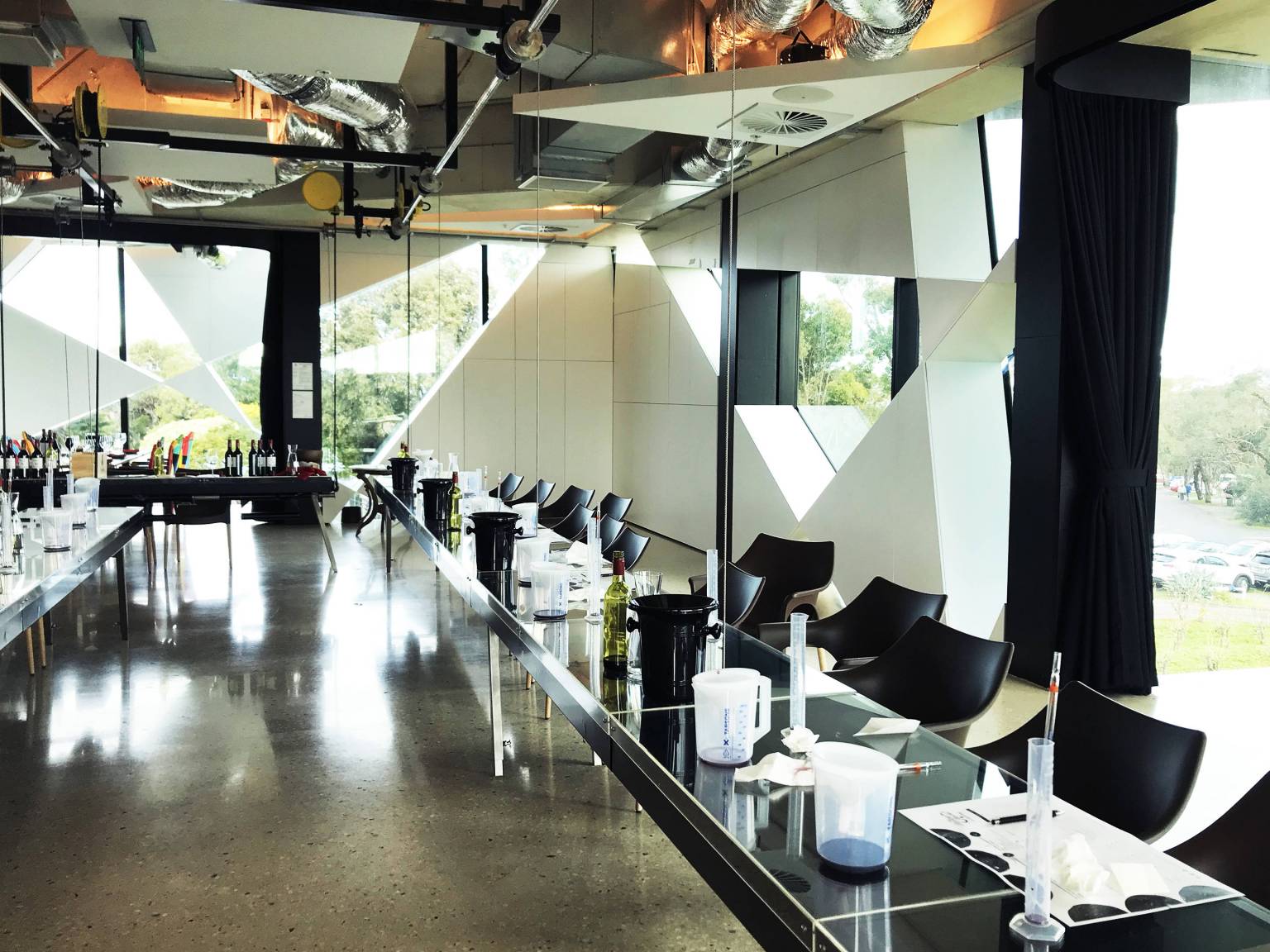
Inside the Cube, it’s full-fledged sensory overload; there are 4 dizzying floors which starts with the Alternate Realities museum on the main level: “I named it that because when you and I have the same glass of wine, we have a different reality (in terms of how we perceive and enjoy it with our senses)—so to me, we all have and share alternate realities.” The space is brimming with collages, paintings, sculptures, trinkets and artifacts that are meant to activate all your senses. His curio collection is either all crafted or conceptualized by Osborn; otherwise, it’s commissioned by local artists to transform his ideas into a reality. The art is an extension of the man; it’s as though you’ve dived head first into his mind and become enveloped by the endless stream of visions and dreams that swim around inside. There’s heartfelt conviction to this work; and for him, it all carries personal and/or symbolic connection to honoring the art, heritage, and craft of viticulture.
And the pieces in the museum are ever-expanding, which is why there’s a handy interpretative app you can download that acts as your field guide. I have two personal favorites; the first is the 15 minute video of d’Arenberg’s wines. It’s a trippy-inducing-high envisioned by digital artist Luku Kukuku who interprets of each of the labels (e.g. The Athazagoraphobic Cat, The Money Spider, The Noble Mud Pie) with wacky and wild montages that’s set against a backdrop of 60s/70s disco music. The second is the thousands of VHS tape ribbons that have been strung from the ceiling; its shape is meant to resemble a fermenting room with the strands representing the grapes. “As if in the dark, you wander in with trepidation: it’s meant to make you feel as if you’ve fallen over—you’ll see a skeletal arm moving around inside and this represents death. Which is what would really happen to you if you fell into one of these fermenting tanks in real life. It also represents another one of our popular wine labels: The Dead Arm.” With a twinkle in his eye, he chats and gesticulates a-mile-a-minute about his work in literal and interpretive forms; and at this point, I’m not sure what’s more interesting to me - the art or the artist.
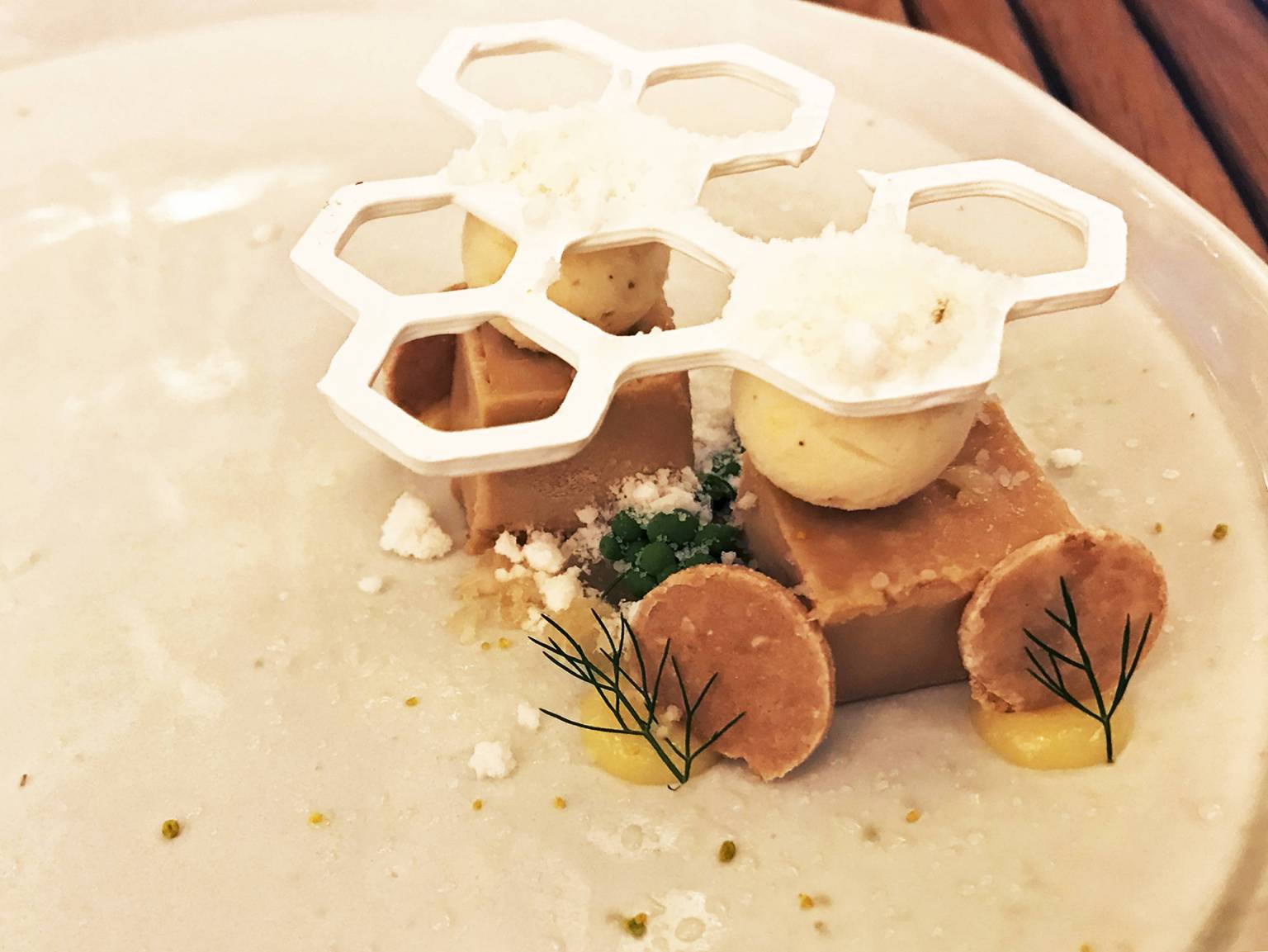
D’Arenberg Cube's restaurant occupies the entire third floor. Chef Brendan Wessels, who hails from South Africa, and his culinary brigade offer uninhibited and ambitious plates. Along with being the only commercial kitchen in the southern hemisphere that does 3-D food printing, the genesis and menu concepts stem from “having fun and not taking anything too seriously.” His culinary philosophy aligns with Osborn’s where “he has faith in your abilities, affords you creative freedom and allows you to be a child.”
Initially, the lunch tasting menu with wine pairing spanned six hours, but they quickly recognized it to be overkill. “It can start to have adverse effects on the body and mind with diminishing returns on pleasure and enjoyment.” So they scaled it down to a manageable 3-4 hour timeframe with about 15-17 courses. The meal is transformative and stretches the boundaries of what food can be. A featured dish called the Scallop Silk is exemplary of this: they blend the mollusks, then add olive oil and xanthan gum. The mixture is poured through a sieve drum and portioned out into Cryovac-sealed bags before being rolled into thin sheets and steamed at 133°C (271°F) for 5 minutes, and then blast-chilled. The unctuous ribbons are topped with a crispy nest then finished with sea grapes, sudachi, and kosho. “It’s unadulterated scallop flavor; it’s tasting pure scallop essence,” Wessel offers.
Care for Some Canadian Cannabis-Infused Food Porn?
Playboy visits Travis Petersen, founder of the Infused Dining Series

By the time we ascend the last flight of stairs to the top floor’s Tasting Room, we end up where we began our journey—with a stunning woman. The “wine woman” greets you as you enter; she “swims” from panel to panel via her virtual “fermenting aquarium”, thanks to Osborn outfitting the space with 115 television screens. By this point, my senses are on edge and pulsating; they’ve been heightened to the point where I could implode, but in a good way. I inform Osborn of this. He nods approvingly. “My aim is to prime your senses. You start at the bottom and by the time you reach the top, everything is going to taste much louder and grander.” As Osborn first remarked, the feeling is euphoric; and with a glass of woodland-berried Solipsistic Snollygoster in hand, I toast to that.
So what does dad think of it now? “He thinks it’s very attractive.”
